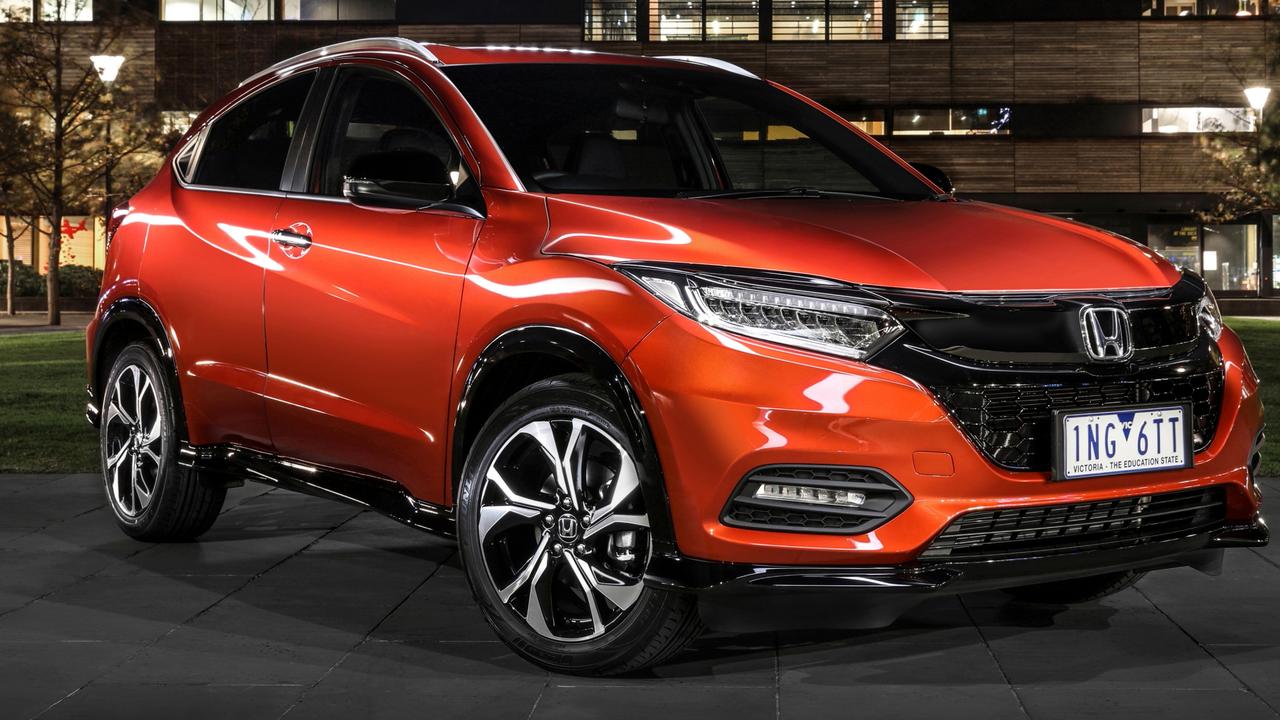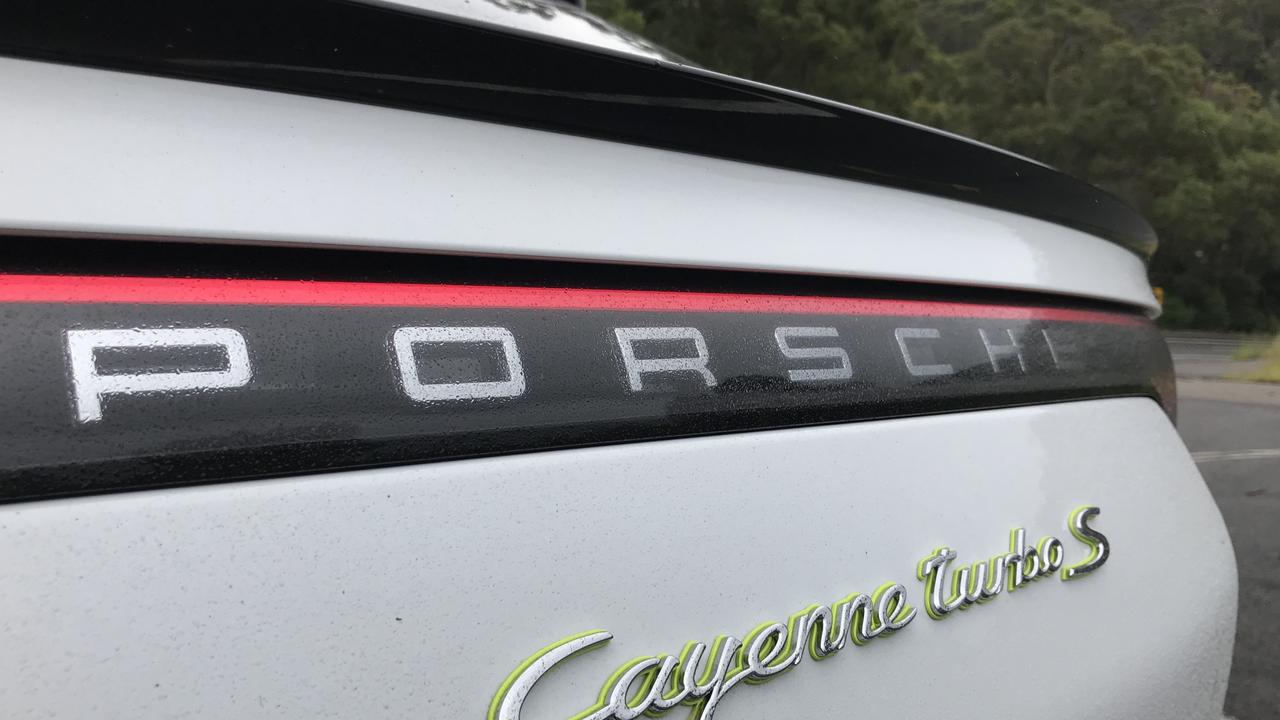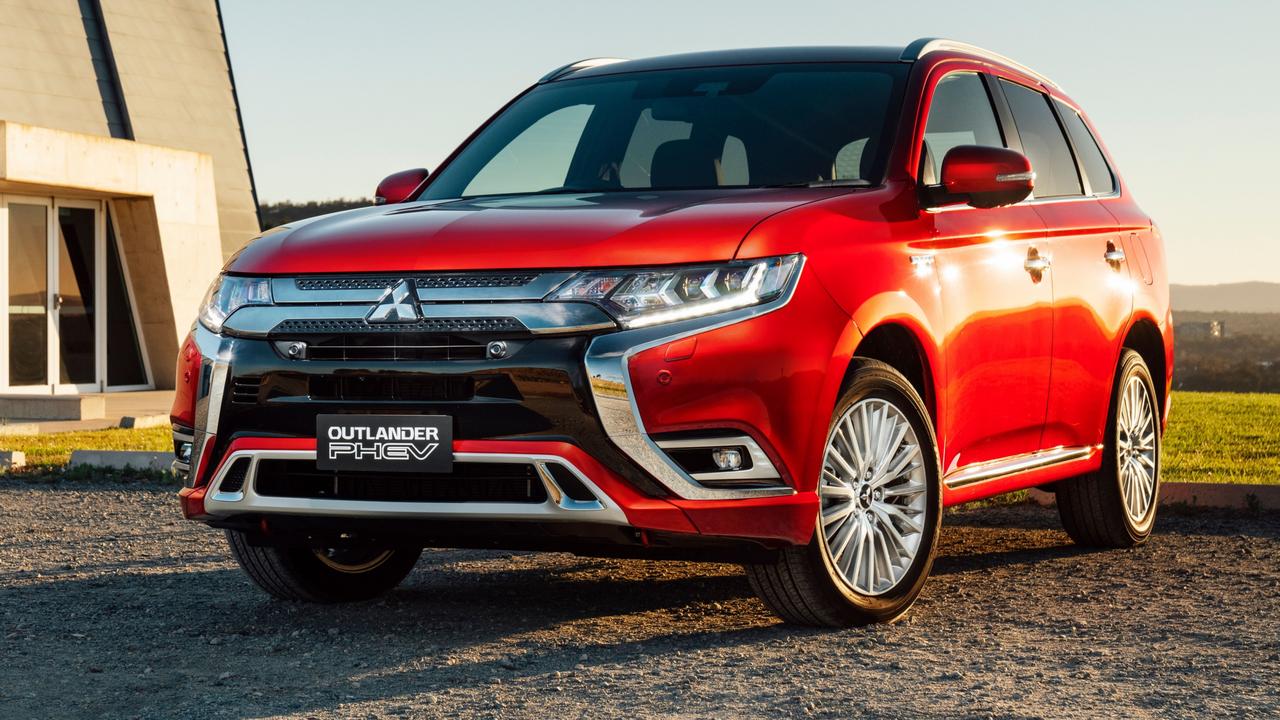German Holden Commodore tested: four-cylinder versus V6 reveals a surprise result
THIS is the biggest change to Commodore in 40 years: no V8 and it’s smaller than before. Will the heartland buy it?
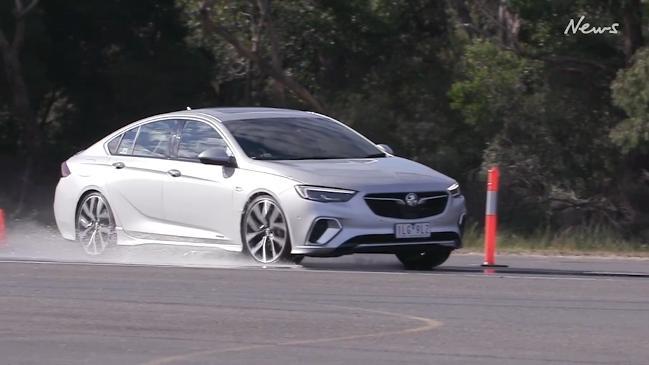
THE arrival of a new Holden Commodore is less frequent than a solar eclipse.
This is only the fifth generation in 40 years, and the first completely new model in more than a decade.
Adding to the suspense for car enthusiasts and fleet managers, this Commodore is like no other.
It’s imported from Germany, smaller than the homegrown model it replaces, has a choice of four-cylinder petrol or diesel power, or V6 all-wheel-drive.
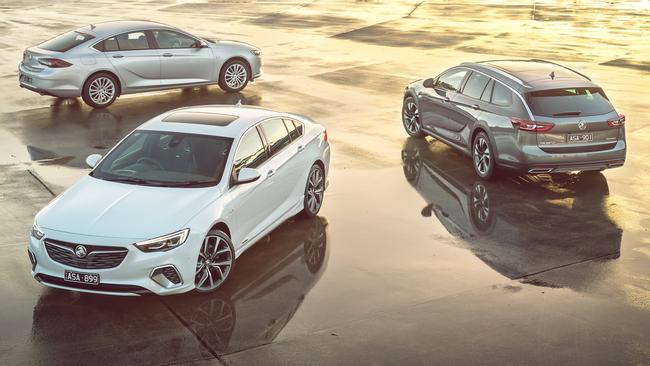
In case you missed it, this is the first time Holden has been without a V8 since 1968. At least until the Chevrolet Camaro arrives in selected Holden dealers later this year, and the Corvette joins it in 2020.
As difficult as this is to contemplate for the Holden heartland, the Commodore now competes with the likes of Toyota Camry, Mazda6, Hyundai Sonata and Ford Mondeo — rivals that were previously dismissed as not worthy of mention in the same breath.
The starting price is sharper than the previous Commodore but dearer than most of its new rivals.
The range starts from $35,990 drive-away for the four-cylinder front-drive and stretches to $60,000 for one with the works. There’s a choice of sedan, wagon or a high-riding wagon called ‘Tourer’.
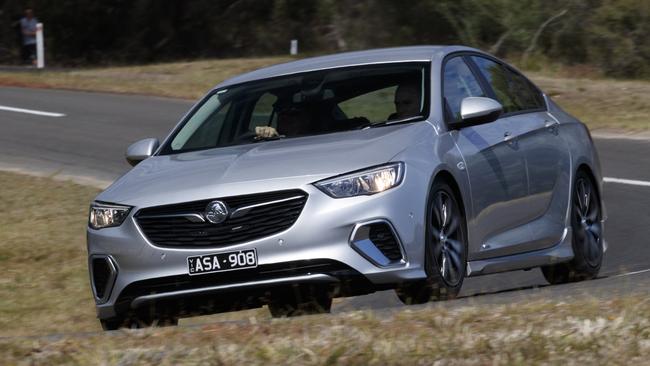
As we reported last year this is the car Holden would have built had it continued local manufacturing, so V8 diehards would be in mourning either way.
Times have changed and so too have buyer tastes. Although V8s represented more than one-third of Commodore sales over the life of the car, we weren’t buying enough to sustain a local variant, let alone a factory.
The sedan market has been in free fall for more than a decade. As import tariffs came down or were scrapped, foreign cars became cheaper, better equipped or both, making it next to impossible for locally-made models to compete.
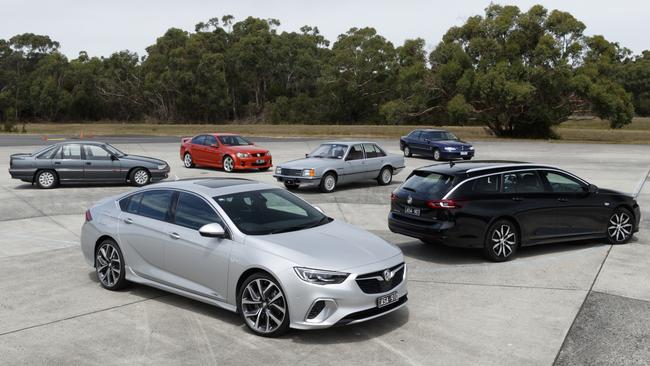
True demand for the locally made Camry and Commodore will be evident later this year now Toyota and Holden have stopped pumping cars at drastically discounted prices into rental and government fleets to keep local factories running.
On current estimates sales of the Camry and Commodore will be about one-third of last year’s rate as buyers continue to shift to SUVs, small cars and utes — all of which are more practical than sedans. Ford’s Mondeo tally is a fraction of what the Falcon’s used to be.
Which brings us to the new ‘Commodore’, in inverted commas because it’s sold elsewhere as a Buick, an Opel and a Vauxhall.
However, Holden engineers have been all over it, fine-tuning the steering, suspension and transmission calibrations over the past 18 months.
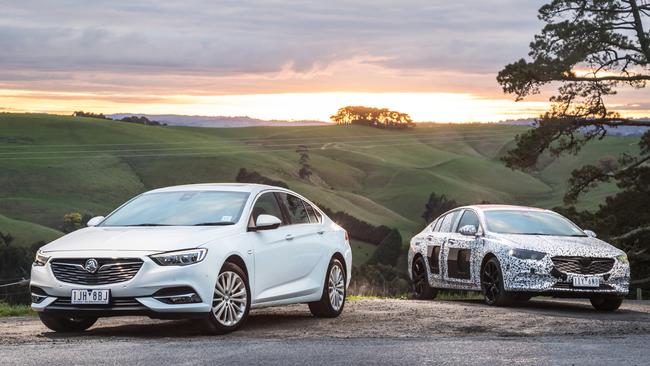
A V6 was squeezed under the bonnet just for Australia, but there’s no room — engineering-wise, not in terms of physical space — for twin turbos.
This is the first Commodore without the option of a manual transmission; instead there is a nine-speed auto for the petrol engines and an eight-speed auto for the diesel.
It’s the most hi-tech Holden to wear a Commodore badge.
Standard fare includes automatic emergency braking, lane keeping assistance, Apple Car Play and Android Auto, a sensor key with push button start and LED headlights and tail-lights.
More expensive models gain heated and cooled front seats with a massage function, radar cruise control, blind zone warning, rear cross traffic alert, 360-degree camera, wireless phone charging and intelligent multi-LED high beams that don’t dazzle oncoming cars while still illuminating the road around them.
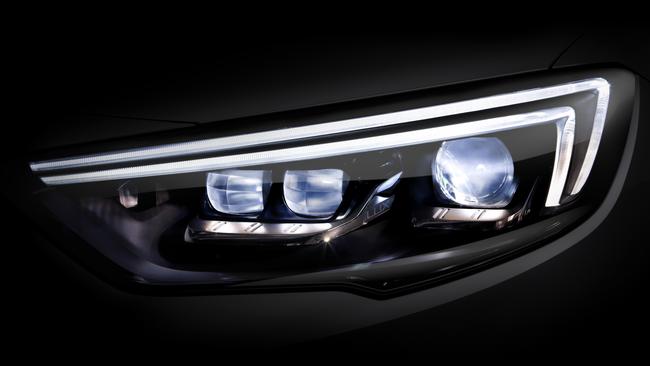
There’s only a space saver spare tyre in the boot (fitted locally rather than ex factory) on most models; the flagship comes with a tyre inflator kit because the spare won’t fit over the big brakes. Ford, Subaru, Toyota, Hyundai and Volkswagen have full size spares on certain models.
Service intervals are now 12 months/12,000km, which means more frequent servicing for drivers who do big distances; the previous interval was 9 months/15,000km.
ON THE ROAD
First impressions from behind the wheel? The dash looks like an Astra.
It’s a pleasing design, it just doesn’t look like you’ve arrived at a premium destination.
Only the most expensive Commodores get the fancy digital instrument display; lesser models get analogue dials and a small digital screen that will look familiar to Cruze and Astra drivers.
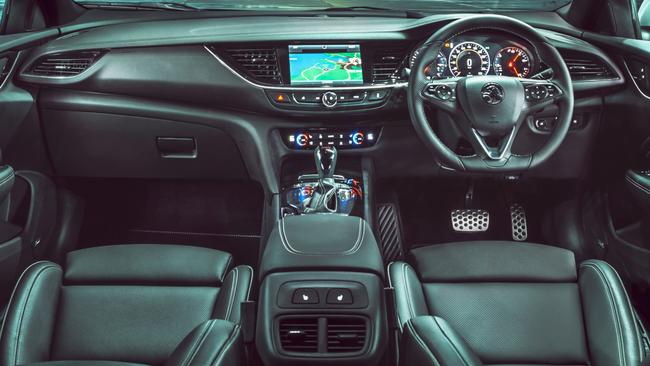
Holden’s tape measure shows that while the exterior dimensions are smaller, the new Commodore is almost as roomy as before.
Key differences: the roof line is lower, so taller drivers will need to stoop down or bang their head, and it has a noticeably narrower “couple distance”; the driver and front passenger sit closer together.
The back seat has two Isofix child seat mounting points; when they’re not in use it’s more suitable for two adults rather than three.
The boot is a fraction smaller than before but has the convenience of a hatchback and split-folding rear seats, so long wide loads are more easily accommodated. However the boot is not very deep.
Aware of the potential criticism of the car being smaller, Holden went to great lengths to run the tape measure over the new model versus old.
However, it neglected to go into detail on how it measures up against rivals. Based on what we’ve seen, at the very least the Camry and VW Passat are roomier.
Holden says the Commodore can afford to be smaller because the sedan is no longer tasked with doing everything. Today, two-car households might also have a hatchback, an SUV or a ute.
A welcome Commodore trait that has been retained: plenty of length and height adjustment for the driver’s seat.
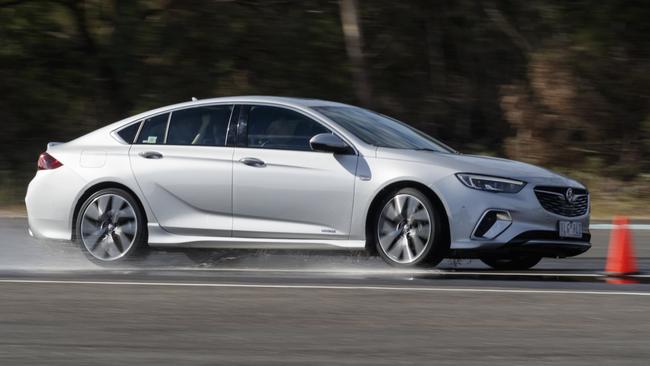
By now rev heads just want to know how it drives. Good news: Holden has done an admirable job of tuning the Commodore to local conditions.
To illustrate the point, Holden had media sample the Commodore with German suspension and then immediately afterwards a car with Australian suspension.
Surprise, surprise, the Aussie-tuned one was superior, settling quickly after big bumps.
The steering is direct and the V6 all-wheel-drive has more cornering grip than most buyers will ever explore let alone need.
Straight-line performance will be met with disbelief by some of the Holden heartland.
Using our GPS timing equipment inside Holden’s test track the four-cylinder turbo petrol front-drive matched with a nine-speed auto is, astonishingly, half a second quicker to 100km/h than the old Commodore SV6 — 6.7 versus 7.2 seconds, if you’re curious.
The V6 all-wheel with nine-speed auto is just over a second slower than the previous V8 (6.2 versus 5.1 seconds).
Not a bad effort, but the four-cylinder with all-wheel-drive — available in Europe, not here — would come close to beating the V6.
Drum roll, please … although it likes a drink, and insists on premium unleaded, I prefer the turbo four petrol. It’s more responsive once on the move. The V6 sounds coarse and is almost 200kg heaver than the equivalent four-cylinder petrol, thanks to the bigger engine, and all-wheel-drive hardware.
The turbo diesel trails the others by some margin but it’s no slouch, more than one second quicker than the new Toyota Camry four-cylinder to the speed limit (8.8 versus 10.1 seconds).
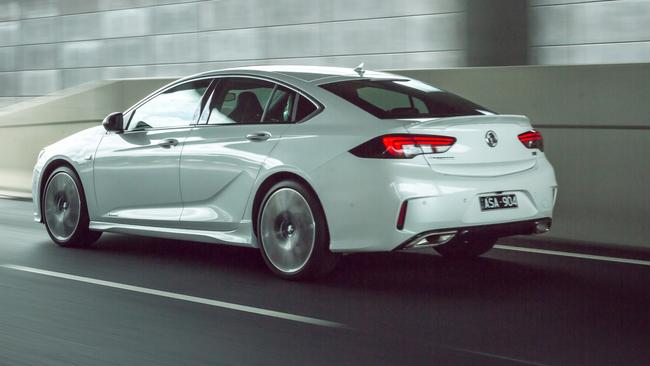
VERDICT 3.5 STARS
The new Holden Commodore is a decent drive but lacks some of the emotion that appeals to revheads. Fleet managers who will decide its fate are less interested in sharp handling and more interested in running costs, resale values and warranty repairs.
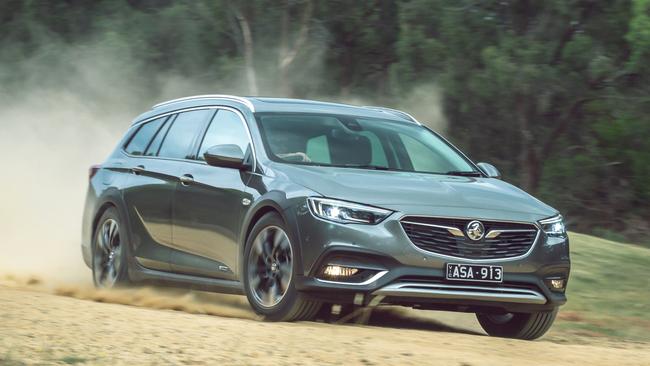
HIGH ROLLER
The high-riding Commodore wagon that looks like a rival to the Subaru Outback could be the biggest selling variant of the new range — if Holden gets the right engines under the bonnet.
The ‘Tourer’ is initially hamstrung because it is only available with all-wheel-drive V6 petrol power, and only in two luxury grades that cost between $47,990 and $58,900 drive-away.
In Europe the ‘Tourer’ is available with 2.0-litre turbo diesel or 2.0-litre turbo petrol four-cylinder engines.
Only 10 per cent of Subaru Outbacks sold in Australia are six-cylinder; the remainder are four-cylinder petrol or diesel.
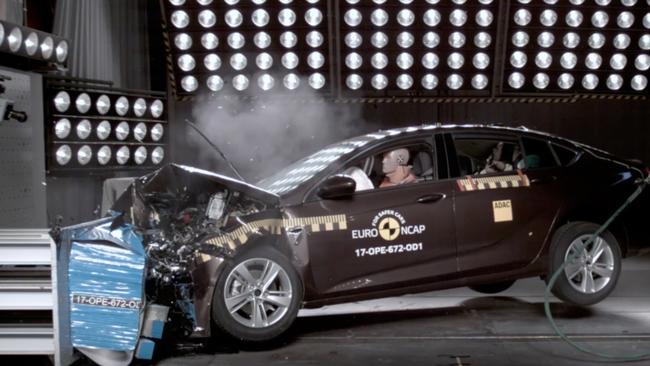
AT A GLANCE
Price $35,990 to $59,450 drive-away (expensive)
Servicing 12 month/12,000km intervals (short distance), $1176-$1276 over 3 years (average)
Engine 2.0-litre 4-cyl turbo petrol, 191kW/350Nm (plenty), 3.6-litre V6 petrol, 235kW/381Nm (ok), 2.0-litre 4-cyl turbo diesel, 125kW/400Nm (fair)
Safety 6 airbags, AEB standard, 5-star ANCAP rating (good)
Economy 4-cyl petrol 7.4-7.9L/100km, 95 RON (thirsty), V6 petrol 8.9-9.3 L/100km (thirsty), 4-cyl diesel 5.6-5.8L/100km (thirsty)
Luggage Sedan 490L, wagon 560L (fair)
Weight 1515-1535kg (4-cyl petrol sedan), 1593-1613kg (4-cyl diesel sedan), 1672-1737kg (V6 AWD sedan), 1543-1569kg (4-cyl petrol wagon), 1617kg (4-cyl diesel wagon), 1705-1772kg (V6 AWD wagon)
Turning circle 11.4m (17-inch tyres), 11.7m (18-inch tyres), 12.7m (20-inch tyres)
Towing 1800kg (4-cyl petrol or diesel), 2100kg (V6 AWD)
This reporter is on Twitter: @JoshuaDowling

